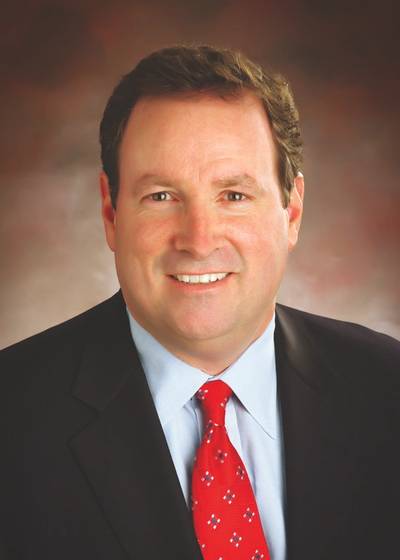Interview: Michael P. Ryan, CEO, ACL
Michael P. Ryan, President and CEO, American Commercial Lines Inc., shares with readers of MarineLink.com his insights on key market drivers for the coming year.
What legislative/political issue do you count as the most important for the marine industry in the next few years?
MR: Investment in transportation infrastructure presents an enormous opportunity for the marine industry and our nation. Thoughtful policy makers are embracing efforts to modernize the entire U.S. transportation infrastructure — including air, highways, rail and waterways. Traditionally, this nation's unique ability to move freight has provided us with a competitive advantage. But, we are long overdue in reinvesting in our future. If policy makers take a comprehensive look at the phenomenal growth in freight volumes expected in the next 20 years, waterways will reveal themselves as a fundamentally sound investment and an opportunity to grow our economy while protecting our quality of life.
While rebuilding our highways and rail infrastructure gets more attention, waterway freight transportation is the cleanest, safest, most economical, and most environmentally friendly mode of transportation available. When was the last time anyone was late for work because of congestion from too much barge traffic? As the rails and highways operate at capacity, the waterways offer a compelling alternative.
Our waterways have untapped potential to move goods. A modernized inland waterways system could move up to fifty percent more freight than it does today with little or no impact on the quality of life of surrounding communities. From a public policy perspective, that growth upside is the waterway's unique advantage. It's time our nation leverages the inland waterways system to its full potential.
The U.S. Corps of Engineers estimates that we can modernize every lock project under consideration for less than $10 billion over the next twenty years. When compared with the $140 billion tax credit that the rail industry is shopping on Capitol Hill and the proposed $450 billion highway bill, modernization of our waterways requires a small investment with big returns.
Modernizing marine transportation must be part of the solution to growing our economy. But first, we have to change the way we finance and deliver improvements. We must take a comprehensive approach to modernization of the inland waterways system. Multi-year financing would allow us to complete projects as quickly as possible. The current system of building projects is broken. It takes far too long to build a lock, which escalates costs and needlessly defers the benefits. It is time to create a new model.
How is your company investing today to build a better future?
MR: The simple answer to this question is that we are investing aggressively in our business to build a better future for the company. Ultimately, the key to our success remains in building barges, moving barges, capturing a premium for our services and products, and most importantly reinvesting in our assets and workforce. By doing this, we not only set a course for the future of the company, we act on it. In 2007, we invested approximately $110 million to improve the quality of our barge fleet, shipyards, facilities, and workforce. Over the last several years, our investment levels have resulted in a fleet with an average age that compares favorably to the industry average. Additionally, our growth engine into the future will be fueled by our sales, marketing, and customer service programs. Our focus will continue to be on further developing our scheduled service offerings and maximizing profits in all of our business lines. We will not depart from our industry-leading efforts and investment in securing the safety of our people and taking a leadership role in environmental stewardship. We are committed to investing in and aggressively pursuing the best portfolio of transportation business. At the same time, we are developing stronger processes, improving productivity, and producing greater margins on the manufacturing side of our business through our investments in the shipyard. We have a great foundation on which we can continue to build, and only through investment in our business - our people, facilities, and equipment - can we secure that foundation for the future.
Maritime employment, specifically the lack of people in the "next generation" to sufficiently fulfill industry needs, is a defining topic for this generation. Is this a problem, and if so, what is your company/organization doing to ensure adequate, well-trained employees for the future?
MR: The industry as a whole is being challenged by a highly competitive and shrinking qualified labor pool. ACL is fortunate to have an extremely talented, well-trained and loyal workforce, which is exemplified by our industry-leading safety record. We have been able to retain and attract key talent by investing in our fleet and facilities, as well as our people. A few examples of our investments include a comprehensive fleet upgrade initiative, expanded educational and professional development program offerings, installation of state-of-the-art safety equipment, and a total compensation and benefits package that remains competitive within the industry.
As we look ahead toward our need to create a pipeline of future mariners, we are developing creative employment marketing strategies and further enhancing our training programs. We are proactively pursuing new talent by reaching out to educational institutions and maritime institutes and introducing their students to the inland waterways and potential career paths that exist. We are using public venues, such as sporting events, as a forum to educate people on the opportunities within the industry, and we are identifying and attracting previously untapped pools of talent through new skill-based career development initiatives.
I am encouraged by the success we have had at attracting new employees to the organization and excited about employees sharing their ideas on how we can operate more efficiently. I am confident that the innovative initiatives we have launched will ensure that we are well positioned for the future with a skilled and well-trained workforce.
(Source: MarineNews, June 2008 edition, "CEO Six-Pack")











